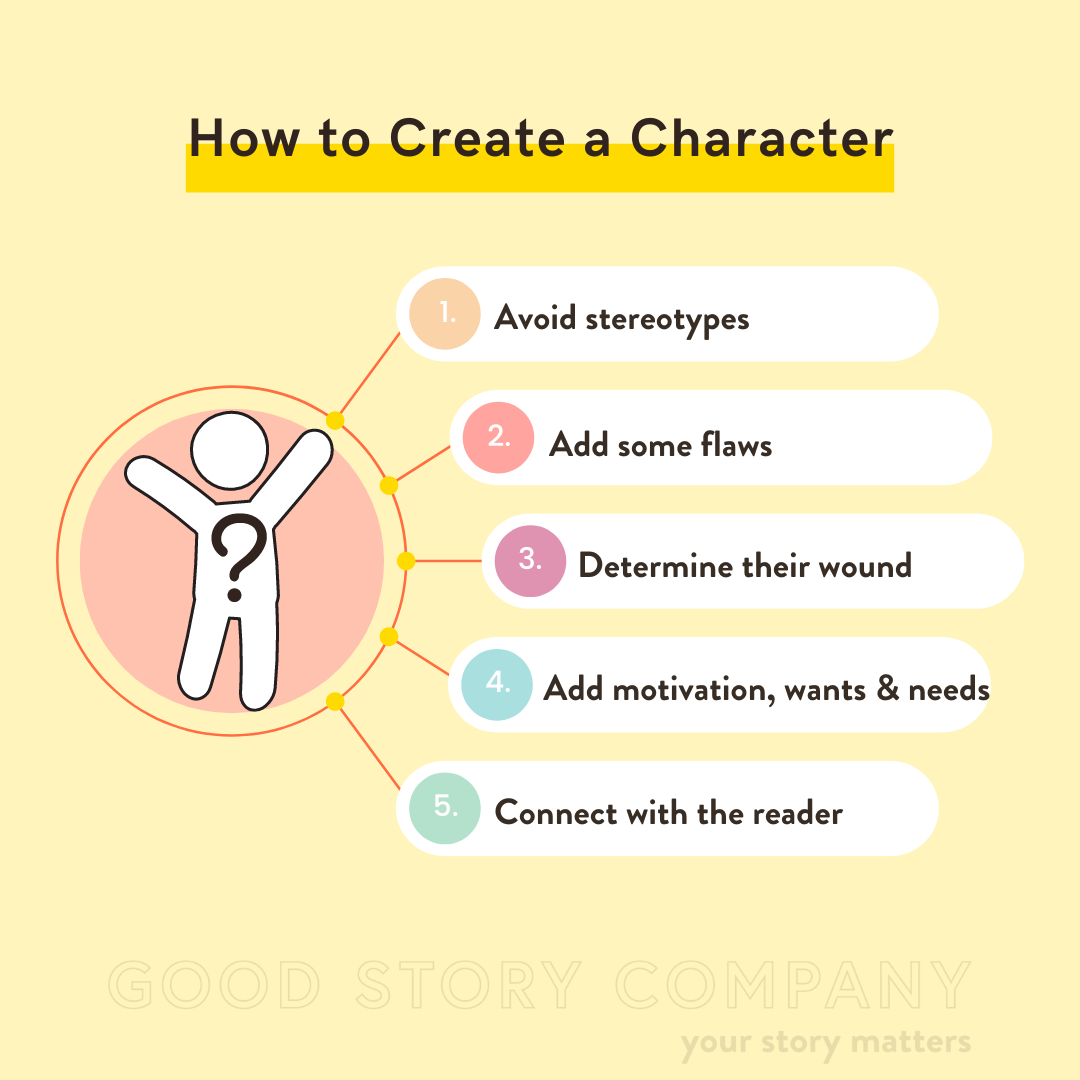How to Create Characters for a Novel
By michal leah
proofreader, beta reader, and writing teacher.
If you’re wondering how to create characters for a novel that readers can relate to, know that this is one of the most challenging and rewarding aspects of writing. It's an art form that takes practice, patience, and an understanding of human nature. How to create characters for a novel is also a skill that you will likely be working on for your entire writing journey. Learning how to create characters for a novel can be challenging. But if you're willing to put in the work, you can learn how to create characters for a novel that people will connect with on a deep and meaningful level.
How to Create Characters for a Novel with Backstory
The first step in learning how to create characters for a novel is learning how to develop their backstory. This is the history that informs who your character is in the present day—their upbringing, their experiences, and their relationships with other characters. Who they were in the past, how this might affect who they are in the present, and how they think about who they will be in the future.
While it's important to understand your character's backstory yourself as an author, you don't need to include every detail in your story. Instead, focus on painting a vivid picture of who they are while leaving room for readers to draw their own conclusions. (Leaning away from telling—prioritizing showing not telling—is one of the skills you need to develop if you want to know how to create characters for a novel.)
Creating a Character Arc
The second step in crafting relatability is creating a character arc—an internal journey they take over the course of the story. This could be something as simple as overcoming fear or learning to trust again after being betrayed by someone close to them.
By establishing an arc for each character in your story, you give them a sense of purpose and direction that readers can relate to on some level. You can’t master how to create characters for a novel without considering who they are at the beginning, middle, and end of the story.
Remember when you want to know how to create characters for a novel is that they shouldn’t be static. They should be working toward something, whether that’s clarity or redemption. If your characters don’t change or grow (even a little bit), you might need to examine whether you’ve given them enough of a character arc.
How to Create Characters for a Novel that Feel Three-Dimensional
Finally, it's important to give your characters flaws—realistic imperfections that make them more human and relatable. Readers don’t want to read about someone who is perfect, unless they are about to see this person lose it. These misunderstandings, insecurities, and flaws should be understandable but not overwhelming—otherwise, readers may struggle to sympathize with your characters or even like them at all! Think about what makes each character unique while still making sure they remain realistic; this will help you create complex yet believable characters your audience will love (or love to hate).
Wondering how to create characters for a novel? Crafting a relatable character requires time, effort, and plenty of thoughtfulness from writers. It involves developing backstories for each character that provide insight into who they are in the present day; setting up arcs for each individual character so they have some type of journey during which they can grow; and giving characters flaws so they appear more human and three dimensional. If you take these steps when writing your next manuscript, chances are good that readers will be able to relate to (and root for) your fictional people.
find your writing voice
If you're looking for a supportive editor to help you share your story and feel heard, look no further. Michal Leah offers proofreading, beta reading, and sensitivity reading to make sure your story is told authentically and intentionally. Michal brings attention to detail to everything she does, and that means your story will be in the best hands possible.


